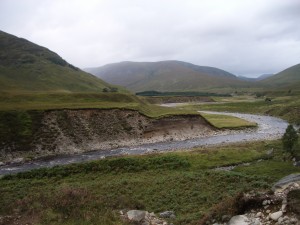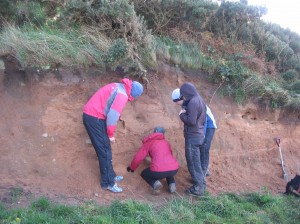Choosing a topic

As part of your A-Level or Advanced Higher Geography studies, you are required to undertake a fieldwork project as part of your independent study. This is your chance to do something that you’re really interested in! But choosing what to study can be daunting. How can you narrow it down?
Firstly, look through your notes. You should only study a topic that you have taken as a module during your A-Level / Advanced Higher Geography studies. For example, do not attempt to do a project on glaciation if you have not studied it! You should choose a topic that you enjoyed. What was your favourite module? Do you want to do a Physical, Human, or Combination project?
Secondly, you need to choose a project that is feasible. You need to be able to carry it out around your home town. Don’t try and plan a project that is very far away and difficult and costly to access. Are there some good exposures of glacial near rivers or the coast that you can safely access? Will you need a hardhat or permission from land owners to access these sites?
Thirdly, your project needs to be safe. You may need to carry out a risk assessment. Remote areas may be risky to go into alone, and working near rivers or coasts may have a risk of drowning.
Fourthly, you need to ensure that you will be able to access sites. Many sites, such as some dunes or quarries, are not more broadly accessible.
Finally, what secondary resources are available to you? Can you use Google Maps or Google Earth? Are satellite images, aerial photographs or other datasets available on the internet?
Planning your fieldwork investigation

Once you have narrowed your choice down to a subject that you enjoy and a geographical area that is feasible, affordable and logistically possible, you need to start planning your project. Your project should deliver some new information or understanding. Take a look at our page on Research Design.
Research Questions
First, you need to come up with a research question. What problem could you solve? Think how, why, where, when. Work out which questions you might be able to answer in your limited time. If you were interested in glaciation, some good questions might be,
- What glacial landforms are there near XX town?
- How can glacial sediments or landforms be economically valuable? (e.g., quarried)
- How quickly are glaciers shrinking in the Alps?
- What evidence is there for glacial erosion in XXX region?
- What evidence is there for glacial deposition in XX region?
- Can we tell from glacial landforms what direction the ice flowed in XXX region?
- What evidence is there for lodgement till formation in XX region?
- How do glacial sediments differ from river sediments?
Aims and Objectives

Once you have identified your topic, the kinds of questions you want to answer, and your geographical area, you can start to think of an aim for your project. Try and summarise your aim in one sentence. Your aim should be the overall goal of your independent Geography Fieldwork Investigation. Your aim should include words like:
- to quantify
- to assess
- impact
- to understand
- to measure
For example, some good aims might be:
- To assess the glacial landforms around XX town
- To understand glacial processes from glacial sediments exposed in coastal cliff sections around XX town
- To measure ice flow direction from a drumlin field
- To quantify change in glacial extent around XXX
- To quantify the difference between glacial and fluvial sediments
Define a Hypothesis
You may also want to define a hypothesis at this stage. A hypothesis is a testable idea. For example, your hypotheses might be,
- Glacial sediments contain more angular rocks than river sediments
- The flowed north-west to south-east along XXX valley
- XXX valley was glacially abraded during the Last Glacial Maximum
- XXX region was a zone of glacial deposition during the Last Glacial Maximum
Data collection

What data will you collect on your project, and what techniques will you be using? You should only try and use techniques with which you are familiar, and that you have been taught by your teacher. How many samples will you need to take?
If you wanted to take a look at some of the fabulous glacial geology in your local area, you could take a look at the Techniques in Glacial Geology for some ideas. Some techniques that you might use could include:
- Measuring pebble size and shape, and comparing between different sedimentary environments (e.g., glacial / fluvial / upland / lowland);
- Sketching and drawing glacial sediments exposed in river cuttings, quarries (ask permission) or coastal cliffs;
- Mapping glacial moraines using a combination of maps, GPS if your school has them, and satellite images (from Google Earth?);
- Measuring drumlins and their orientation to work out ice flow direction;
- Investigating the glacial geomorphology of an upland region and reconstructing the small cirque glacier (e.g., in Wales or the Lake District or Scotland) (take someone with you into the field);
- Using archival data and Google Earth to map change in glacial extent for a glacier in the Alps (a desk-based study);
- Mapping striations or roche moutonnees in a valley to understand whether the valley was glacially abraded during the last glaciation.
You could also do the Projects suggested to help you understand some of these techniques.
Secondary sources
Next you will need to do some hunting around on the internet to try and find some good quality secondary data relevant to your A-Level Geography fieldwork investigation. Does the school library have any relevant books? Some areas have leaflets or pamphlets published about their geology; does the town Tourist Office have anything useful?
Google Earth may be able to help you by showing you satellite images of your study area.
The BRITICE database has a downloadable PDF map that shows all the glacial landforms mapped around Britain. This might be helpful.
Are there any good quality websites that you can use? Some websites are:
- Landscape Britain
- The Geological Society Glaciation in Britain
- Glaciers Online
- Glaciation of Snowdonia
- Upland Glaciation in Wales – Field Studies Council
- Climate Change Consortium for Wales
- Scottish Natural Heritage
- Geography Fieldwork
See also our Links page on this website.
Risk Assessments
Before understaking your work, you will need to complete a risk assessment. Your risk assessment should identify all the possible hazards and how you might mitigate against them. Risk assessments should quantify:
- Hazards, which have the potential to cause harm;
- Risk, which is the likelihood of the hazard and its severity, as well as who may be involved;
- Mitigations, which is how you control the hazard and risk.
If your fieldwork is deemed to risky, you may not be able to undertake it. So choose a topic that is safe to do, and demonstrate that you can control the risk. You may need to complete a table like the one below.
| Hazard | Risk (severity) | Risk (Likelihood) | Who might be harmed? | Risk control measures |
| Rocks falling on head | High | Medium | Fieldworkers | Wear hardhats; do not work underneath steep overhanging cliff sections |
| Drowning in stream | High | Low | Fieldworkers | Do not enter water more than knee deep |
| Sunstroke | Medium | Low | Fieldworkers | Wear sun hat, t-shirt and sunscreen; drink plenty of water; stay in shade as much as possible |
| Hypothermia | Medium | Low | Fieldworkers | Wear warm clothes, have spare warm jacket, take hot drink in thermos, change itinerary to prevent exposure |
| Injury, cuts and bruises | Low | High | Fieldworkers | Wear hardhats, high-vis jackets, take first aid kit |
| Getting trapped by tides | High | Low | Fieldworkers | Remain close to exit path; check tide times |

Undertaking your A-Level Geography Fieldwork Investigation
If you have done some wider background reading and thought carefully through your aims and objectives, then well done – you are all set to do an excellent fieldwork investigation! Good luck, and remember to enjoy it – this is your chance to do something that you find really interesting.

very informing